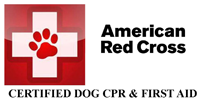Advocate for your dog. If you don’t your dog will advocate for itself and that doesn’t usually turn out well. Who advocates for your dog?
Learn and Understand Canine Body Language.
When we say “advocate” what do we mean?
Who advocates for your dog?
We mean, putting your dog’s physical and emotional well-being first. BEFORE your own wants and needs. You protect your dog, not the other way around. This requires you to be aware, alert and proactive. Practice constant situational awareness. Who advocates for your dog?
Learn and understand canine body language. Make sure to look at the dog’s entire body (a wagging tail does not always equal a happy dog). Doing so affords you the opportunity to not put your dog into or to remove your dog from situations where your dog feels stressed, fearful, overwhelmed, threatened or overexcited. Preempting your dog from taking matters into his own hands or practicing unwanted behaviors.
Don’t let other dogs or people approach or interact with your dog unless you and your dog are familiar and comfortable with them. Especially if your dog exhibits any signs of nervousness, fear, anxiety, stress, over arousal/excitement. Over time, this can cause your dog to become nervous and reactive towards people and dogs. Who advocates for your dog?
Don’t put your emotional baggage on your dog. Your dog will view you as soft, weak energy. Energy which is not to be trusted in moments when leadership is needed, resulting in your dog taking the leadership position in situations where he/she feels threatened and ultimately acting out in a negative way.
Build your dog’s confidence and independence through training.
Teach your dog how to be separate from you through duration place, down and crate training. Allowing your dog to follow you everywhere you go creates/reinforces a nervous, insecure state of mind. Who advocates for your dog?
Teach Your Dog To Heel
Teach your dog to walk in the Heel position. This creates a state of mind shift by putting you in the leadership position and your dog in the following position. Leaders need to be alert, pay attention to surroundings and environment. Followers can relax and just follow the leader.
Consistently share leadership, instill structure, routine, boundaries and share consequences for known commands. It is amazing how just setting boundaries (and being consistent about them) can change your relationship with your dog for the better.
Be willing to speak up or take action on your dog’s behalf. Be it in regards to another dog’s rude behavior or a person who does not have your dog’s best interest at heart.
It is NOT anyone’s right to touch/interact with your dog OR to allow their dog to enter yours or your dog’s personal space uninvited.
Advocating for your dog builds and strengthens the bond of trust between you and your canine companion. Which over time can yield a better behaved, well-adjusted, happier dog.










